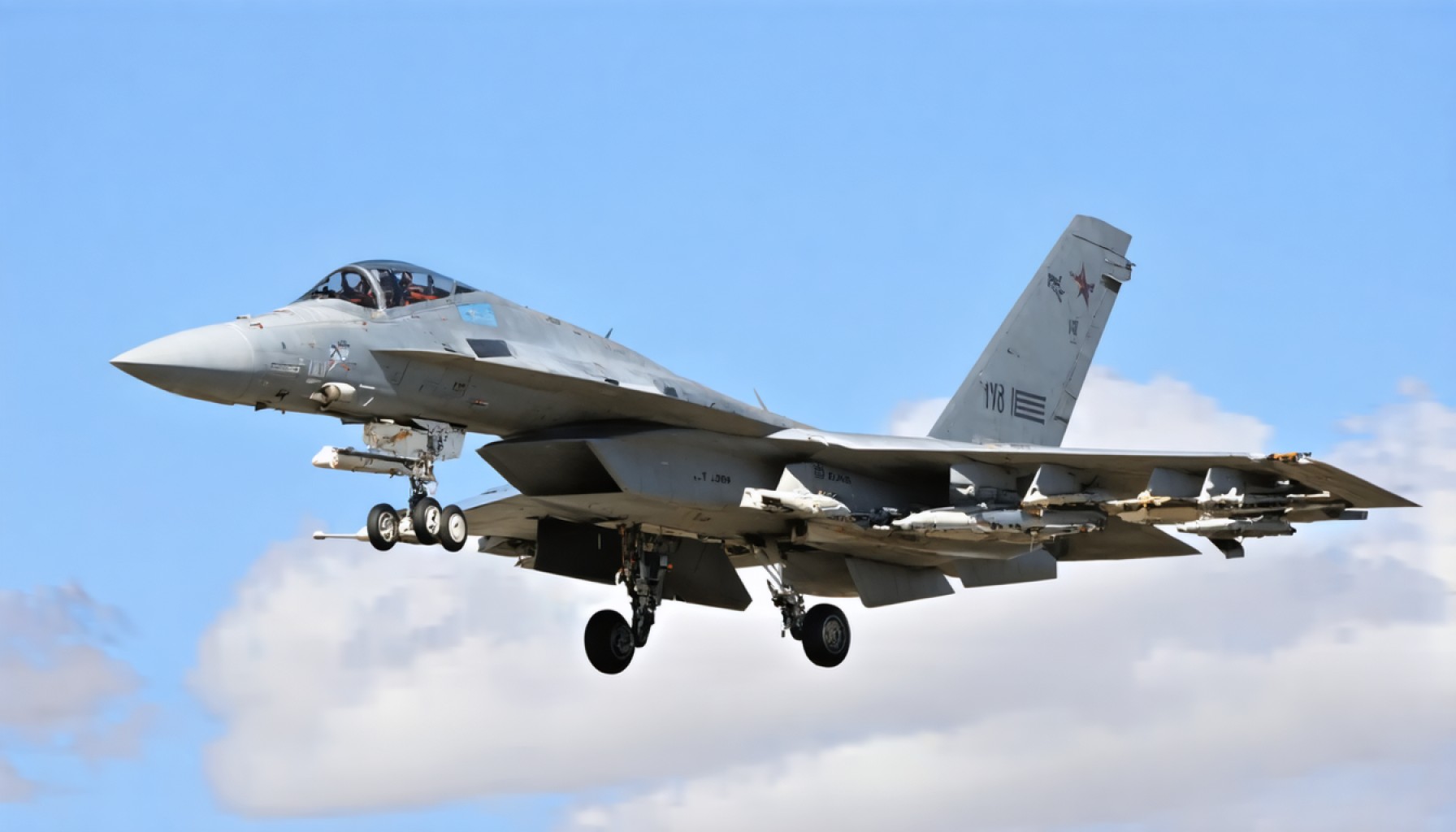- The defense industry is central to economic and geopolitical discussions amid escalating global conflicts.
- Lockheed Martin, a key player in military aviation, faces challenges despite its technological innovations.
- Regions like Ukraine and the Middle East have intensified demand for defense stocks.
- Lockheed Martin’s Q4 2024 saw decreased net sales and income, prompting investor concerns.
- Setbacks in classified projects and issues with the F-35 have affected the company’s financial performance.
- The introduction of the Department of Government Efficiency has influenced investor perceptions of traditional defense firms.
- The company’s strategic partnerships keep optimism alive among industry analysts.
- Adaptability is crucial for defense giants like Lockheed Martin in changing geopolitical landscapes.
As the world grapples with escalating conflicts, the defense industry stands as both an economic powerhouse and a focal point of geopolitical debates. Among its giants, Lockheed Martin Corporation (NYSE:LMT) emerges as a pivotal force, yet finds itself navigating murky waters.
The last few years have been marred by surging conflicts, from the war-torn landscapes of Ukraine to volatile territories in the Middle East and Africa. These regions have not only highlighted the dire human toll but have also fueled a boom for defense stocks. In this turbulent backdrop, companies like Lockheed Martin are thrust into the spotlight, wrestling with evolving expectations.
Lockheed Martin, a titan renowned for its innovation in military aviation with iconic aircraft like the F-35, now faces a conundrum. While its technological prowess remains uncontested, its financial stature has wavered. In a stark revelation, the company reported a significant dip in net sales and income during Q4 2024, igniting jitters among investors. The decline, attributed to setbacks in classified projects and challenges in updating flagship offerings like the F-35, has resulted in a substantial drop in its stock price.
The shifting political tides add another layer of complexity. With the Trump administration’s renewed focus on military efficiency through the creation of the Department of Government Efficiency (DOGE), investor sentiment toward traditional defense giants has been tempered. Despite the headwinds, Lockheed Martin’s strategic partnerships and cutting-edge contributions to aerospace and military technology continue to garner optimism among analysts.
In the broader context, Lockheed Martin’s journey underscores a pivotal truth: adaptability in the face of shifting geopolitical landscapes is crucial. As the defense industry recalibrates, the resilience of giants like Lockheed Martin will determine their legacy in a world marked by both conflict and cooperation.
Is Lockheed Martin Losing Its Grip in a Changing Defense Landscape?
How-To Steps & Life Hacks
If you’re interested in understanding how Lockheed Martin stays relevant in the defense sector despite challenges, consider these factors:
1. Innovation Adoption: Stay abreast of new technological advances such as AI and blockchain for enhanced project management and efficiency.
2. Strategic Alliances: Leverage partnerships with other defense industry players to share risk while diversifying product offerings.
3. Constant Market Analysis: Perform frequent SWOT analyses to identify strengths, weaknesses, opportunities, and threats in the changing market landscape.
Real-World Use Cases
Lockheed Martin’s technologies are employed worldwide in various capacities:
1. Military Aviation: The F-35 fighter jet plays a crucial role in defense strategies among NATO allies, providing a technological edge in aerial warfare.
2. Space Exploration: Lockheed Martin contributes to NASA missions, including the Artemis program, showcasing its extensive capabilities in aerospace technology.
3. Cybersecurity: The company offers solutions that protect national infrastructure from cyber threats, crucial for modern warfare strategies.
Market Forecasts & Industry Trends
The global defense market is expected to grow at a CAGR of 3-4% over the next decade, driven by increasing defense budgets in response to global geopolitical tensions.
– Rising Defense Expenditures: Countries like China and India are scaling their military capabilities, providing opportunities for industry giants.
– Technological Innovations: AI, autonomous systems, and cyber technologies are becoming pivotal, requiring companies to adapt their project portfolios.
Reviews & Comparisons
Lockheed Martin vs. General Dynamics
– Innovation: Lockheed Martin leads in aerospace technology with its advanced aircraft like the F-35.
– Varied Portfolio: General Dynamics offers a more diversified portfolio including IT and cybersecurity services.
– Financial Performance: General Dynamics has shown more stable financials in recent quarters compared to Lockheed Martin’s recent setbacks.
Controversies & Limitations
Lockheed Martin faces criticism for:
1. Project Cost Overruns: Large-scale programs like the F-35 have been marred by significant cost and schedule overruns.
2. Ethical Concerns: Operating in the defense sector often entails ethical debates around armament distribution, especially in conflict-ridden areas.
Features, Specs & Pricing
– F-35: Known for its stealth capabilities and advanced avionics, it is priced around $80 million per unit.
– Missile Systems: Known for cutting-edge missile defense systems that are integral to national security strategies.
Security & Sustainability
Lockheed Martin integrates sustainability into its product development processes:
1. Eco-responsibility: The company focuses on reducing emissions in its aircraft and manufacturing processes.
2. Cybersecurity Investments: Continually upgrading systems to thwart potential cyber-attacks critical in today’s digital warfare.
Insights & Predictions
– Diversified Investments: Future growth likely hinges on expanding beyond military applications into areas like green energy and civilian aerospace.
– Increased R&D: Boosting investment in research and development to stay ahead in technological advancements.
Pros & Cons Overview
Pros:
– Leading-edge technology and innovation.
– Strategic global alliances.
– Diverse product offerings beyond just military applications.
Cons:
– Recent financial instability.
– Ethical dilemmas associated with defense operations.
– Vulnerability to political and economic shifts.
Actionable Recommendations
For individuals in the defense or investment sectors looking to navigate similar challenges, consider:
1. Adaptability: Stay open to rapidly evolving technologies and geopolitical changes.
2. Risk Management: Balance portfolios by investing in defense companies with diversified operations beyond just military goods.
Quick Tips:
– Monitor geopolitical developments as they influence defense spending and priorities.
– Keep an eye on technological disruptions that might affect traditional defense platforms.
For more information, visit the homepage of major defense industry players:
– Lockheed Martin
– General Dynamics










